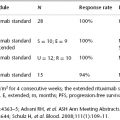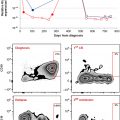Preparative Regimens in Allogeneic Hematopoietic Cell Transplantation for Malignant Hematological Diseases
Dana-Farber Cancer Institute, Boston, MA, USA
Traditionally, conditioning regimens prior to hematopoietic cell transplantation (HCT) were designed to provide the highest dose of chemoradiotherapy tolerated by the patient with the hope of complete tumor eradication. Agents and modalities with nonoverlapping toxicities were combined to limit nonhematopoietic organ complications. The sole function of the conditioning regimen in autologous hematopoietic cell transplantation (auto-HCT) is destruction of residual tumor cells. In contrast, in the allogeneic setting, the conditioning regimen serves an additional function, providing sufficient immune suppression to prevent rejection of donor cells, permitting engraftment of both hematopoietic progenitors and immune effector. We now know that donor immune effectors cells, particularly T-cells but also perhaps natural killer (NK)-cells and B-cells, play a critical role in eliminating residual recipient malignant cells in allo-HCT. This potent graft-versus-tumor (GVT) effect forms the rationale for the use of reduced-intensity conditioning (RIC) and nonmyeloablative conditioning regimens designed to provide adequate immune suppression to promote engraftment without producing organ toxicity. It is hoped that reductions in transplant-related mortality due to collateral tissue damage often induced by ablative conditioning regimens will more than counterbalance the compromise of antitumor cytotoxicity when reduced-dose conditioning is employed. Reduced-intensity regimens allow allo-HCT to be offered to older patients and those with comorbidities that would normally preclude high-dose therapy.
There is no single standard conditioning regimen that has been established in phase III trials as clearly superior in either the ablative or reduced-intensity setting. There are limited numbers of randomized trials comparing regimens, and the most data are derived from phase II or retrospective analyses. Choice of regimen is usually based upon a number of factors such as diagnosis, disease stage (not clinical stage), and comorbidities. This chapter will address the conditioning options available for allo-HCT, and explore some of the controversies surrounding the selection of specific regimens.
Multiple Choice Questions
1. A 32-year-old man presents with acute myelogenous leukemia (AML) with adverse cytogenetics. He has achieved a complete remission with anthracycline and cytosine arabinoside. He tolerated induction therapy well, although he experienced a vancomycin-resistant enterococcus bacteremia that cleared with prolonged antibiotic therapy. He has received two cycles of high-dose ara-C intensification. An 8/8 human leukocyte antigen (HLA)-matched unrelated donor has been identified, and allo-HCT is planned. Of the following, which would be the most reasonable choice of conditioning regimen for him?
- Cyclophosphamide 60 mg/kg 2× plus 1200 cGy fractionated total body irradiation (fTBI)
- Cyclophosphamide 60 mg/kg 2× plus 1000 cGy unfractionated TBI
- Fludarabine and single-dose 200 cGy TBI
- Cyclophosphamide 60 mg/kg 2× plus 1575 cGy fTBI
In general, for a man of this age, a myeloablative regimen would be considered and a TBI-based regimen would be reasonable. Fractionating the dose of irradiation is felt to be less toxic to healthy tissue, allowing for escalation of the total dose. Unfractionated radiation in this range (option B) has been associated with significant hepatic and pulmonary toxicity and is associated with inferior outcome. The optimal number of fractions and their ideal distribution (i.e., over how many days) have not been fully settled. The absence of standardization across studies with reference to energy source, shielding, schedules, and concomitant chemotherapy makes it challenging to determine the best schedule. Higher doses of fractionated radiation such as 1575 cGy (D) have actually been associated with lower relapse rates than 1200 cGy but at the cost of increased nonrelapsed mortality from both direct organ damage and graft-versus-host disease (GVHD). Recently, two studies (retrospective and prospective phase II) reported that a myeloablative regimen with cyclophosphamide and intravenous busulfan is associated with better overall survival (OS) compared to total body radiation and cyclophosphamide in adult patients undergoing allo-HCT for AML. Nonmyeloablative regimens (C) may be less toxic and equally efficacious as traditional regimens, such as option A. However, they are generally reserved for older patients or those with significant comorbidities. A prospective randomized trial of myeloablative conditioning versus RIC is being conducted by the Blood and Marrow Transplant Clinical Trials Network (BMT CTN) for patients with AML and myelodysplastic syndrome (MDS). It is possible we will learn that in certain circumstances bigger isn’t better.
2. A 46-year-old woman has been treated for non-Hodgkin’s lymphoma for the past 9 years. She received treatment with several lines of therapy and underwent an autologous transplant 2 years ago. She remained in remission for 20 months but then relapsed. Salvage therapy has resulted in an excellent partial remission, and her doctors have recommended an allogeneic transplant. She has an HLA-identical sister who will serve as the donor. Of the following, which would be the most reasonable conditioning regimen for her?







